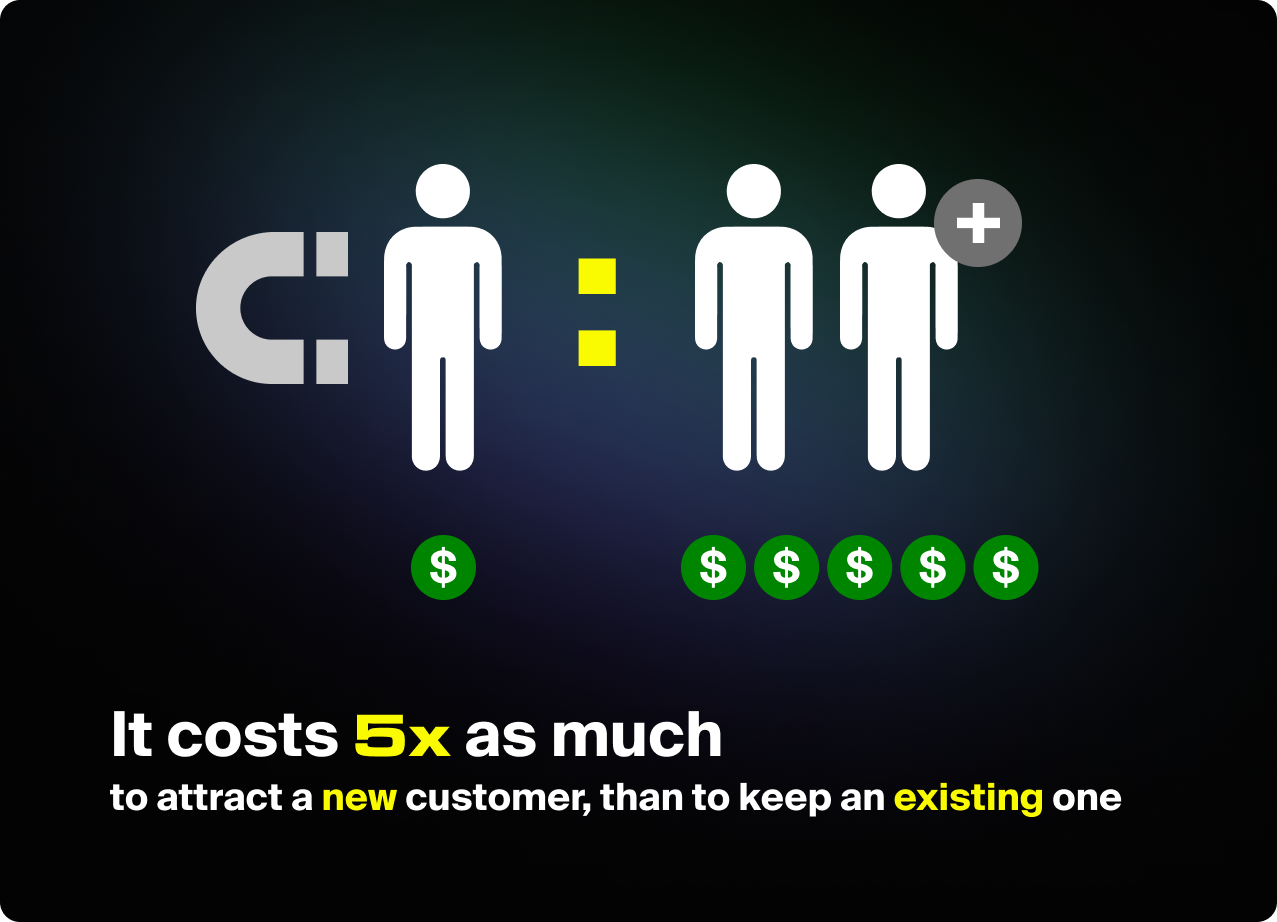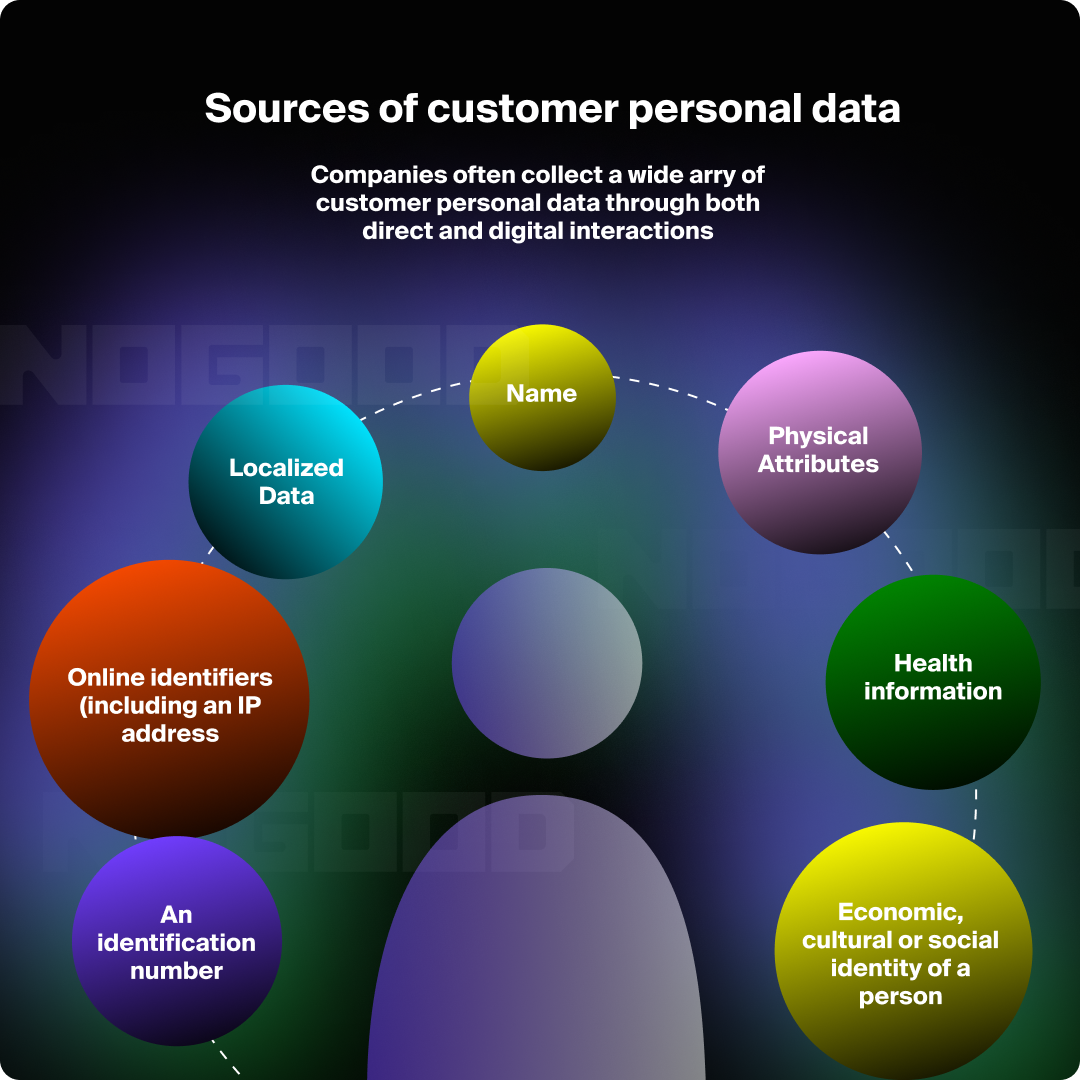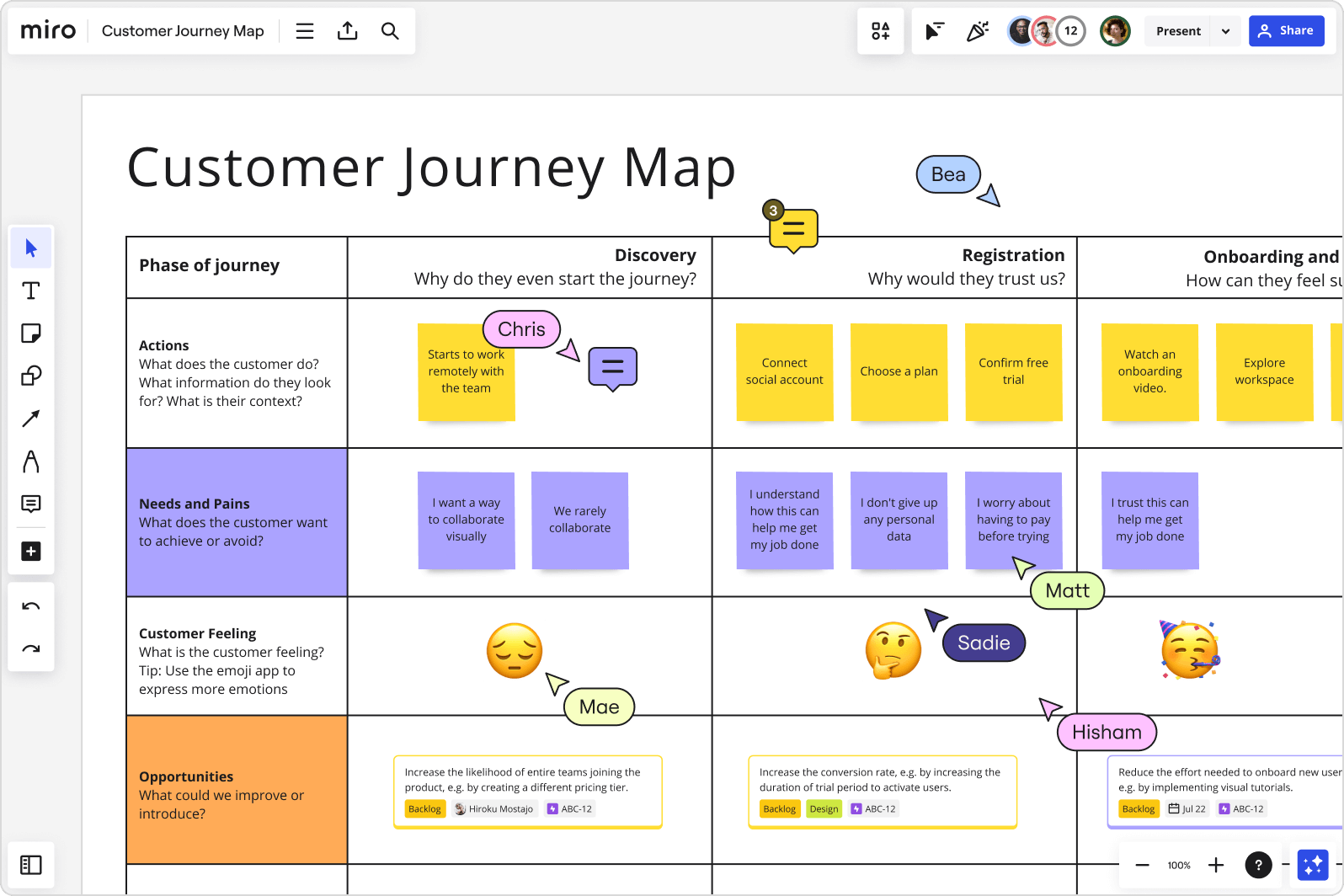Acquiring a new customer can cost five times more than retaining an existing customer, making customer retention a key metric for brands and businesses to consider when pursuing scalable, sustainable growth. While many may see growth simply as a race to acquire as many new customers as possible, retaining customers actually provides better results and is crucial for long-term growth.
A brand has a 60-70% chance of making a sale to a retained existing customer, but that percentage drops dramatically to 20% for net new customers. All this is to say: keeping and valuing your existing customers is both strategic and important.

One big benefit of pursuing customer retention is that you already have a foundational level of user data that you can leverage to retain these existing customers. This data may include metrics like total revenue, past purchase frequency, browse history, any zero-party data the user chooses to provide, and more, which can all be used to inform predictive analytics for retention optimization.

What Is Predictive Analytics?
Predictive analytics is a powerful tool in growth marketing that leverages historical data, machine learning, and statistical algorithms to forecast future customer behaviors and trends. By analyzing patterns in past customer interactions, such as purchase history, browsing habits, and engagement metrics, predictive analytics helps marketers anticipate what actions customers are likely to take next.
This insight allows businesses to tailor their marketing efforts, optimize customer journeys, and deliver personalized experiences that drive retention and increase lifetime value. Essentially, predictive analytics turns data into actionable insights, enabling more strategic decision-making in customer retention strategies and lifecycle marketing.

What Is Customer Retention?
Customer retention refers to the strategies and actions a business undertakes to keep its existing customers engaged, satisfied, and loyal over time. Unlike customer acquisition, which focuses on attracting new customers, retention is about nurturing and maintaining relationships with those who have already made a purchase or engaged with the brand. Effective customer retention involves understanding — and often predicting — customer needs, providing consistent value, and delivering exceptional experiences that encourage repeat business. This can involve leveraging data analytics to understand customer lifecycle stages, predicting potential churn, and proactively engaging at-risk customers with targeted interventions. The goal is to increase customer lifetime value (CLTV), which measures the total revenue a customer is expected to generate over their relationship with the brand.
Why Is Customer Retention Important?
The primary reason customer retention is important is its direct impact on profitability. Studies consistently show that it costs significantly less to retain an existing customer than to acquire a new one — some estimates suggest up to five to ten times less. Moreover, retained customers tend to have higher lifetime value (LTV), meaning they are likely to spend more over time, engage more deeply with your brand, and be less price-sensitive. This leads to a more predictable and steady revenue stream, which is essential for planning and scaling a business.
Additionally, retained customers often become brand advocates, spreading positive word-of-mouth and referring new customers to your business. This organic advocacy not only reduces your marketing costs but also enhances your brand’s credibility and reach. Loyal customers are more likely to provide valuable feedback, participate in loyalty programs, and engage with new products or services, creating a virtuous cycle of growth and improvement.
How Is Predictive Analytics Used to Drive Customer Retention?
Predictive analytics is used to drive customer retention by transforming extremely large amounts of data into digestible and actionable insights. By analyzing patterns in customer behavior, preferences and historical interactions, brands can forecast which customers are at risk of churning and intervene before they are fully lapsed. For instance, predictive models can identify subtle signs of dissatisfaction, such as a drop in usage frequency or negative feedback, allowing businesses to proactively address issues with targeted offers, personalized communications, or enhanced support. On the flip side, predictive analytics can also identify the factors that lead to high engagement or sustained loyalty, giving brands data-backed insights on how to further strengthen or double down on the strategies that do work.
What Are Strategies to Reduce Customer Churn Using Predictive Analytics?
Predictive analytics is a powerful tool for reducing customer churn, ensuring that you are leveraging the data that you have in order to keep existing customers engaged over time, no matter where they are in their customer journey. Using user data like purchase history and customer feedback, you can develop predictive models to identify customers who are at high risk of churning. Patterns such as declining engagement, reduced purchase frequency or negative feedback can raise a red flag for possible churn, so that businesses can pinpoint which customers are likely to leave and take proactive steps to retain them. Here are 5 key strategies for using predictive analytics to drive customer retention:
Customer Journey Mapping
Customer journey mapping is a practice that’s important with any retention or lifecycle marketing strategy, but this can be greatly enhanced with insights gained from predictive analytics. You can utilize predictive analytics to create detailed maps of each different customer journey, highlighting the most common paths that lead to churn — or oppositely, sustained engagement.
By understanding these journeys on a more granular level, you can optimize the customer experience at each critical touchpoint, ensuring a smoother progression from step to step that reduces the overall likelihood of going down that path toward churn.

Behavioral Triggers for Engagements
Based on past customer churn data, predictive analytics can identify key behavioral triggers that indicate when a customer is about to disengage. For example, if a customer stops using a particular feature they previously engaged with regularly, an automated email or popup with a special offer can be sent to reengage them by reminding them of the value they derive from said product or service.
Customer Lifecycle Segmentation
You can segment your customer base according to their lifecycle stage (e.g. new, active, at-risk, lapsed, etc.) and use predictive analytics to then further refine these segments based on behavior and preferences. These segments can then serve as the basis for personalized retention campaigns across multiple channels.
Personalized Retention Campaigns
Once you have identified the different customer segments to target, you can use predictive analytics to create personalized retention campaigns that offer incentives, such as discounts or loyalty rewards, tailored to each segment’s preferences and behavioral drivers. This targeted approach can make customers feel more valued and more likely to stay when they feel that their wants and needs are being proactively met.
Cross-sell and Upsell Opportunities
Customer retention encompasses more than just keeping the user engaged with the existing product or service — it’s also about being able to grow the brand-customer relationship and build long-term loyalty to the brand the will evolve with and outlast the current offerings.This means that predictive analytics can also be used to identify the best opportunities to cross-sell and upsell new products at different stages of their lifecycle. For example, if a customer has been engaged with your brand for a certain period of time and has shown interest in specific product categories, a targeted upsell offer for a new, upgraded product in their category of interest can be framed to enhance their experience and increase their commitment to your brand.
The common theme across all churn reduction strategies is proactivity. Predictive analytics enables a level of foresight that you wouldn’t otherwise have, which opens up many opportunities to preemptively engage with key customers that are most at-risk of churning.
The Future of Predictive Analytics for Customer Retention
As AI technologies evolve, they will enable marketers to anticipate customer behavior with even greater precision, moving beyond basic predictions to uncover deep, nuanced patterns in consumer data. This next generation of predictive analytics will harness real-time data streams and sophisticated machine learning models to forecast customer needs almost before they arise.
Marketers will be equipped with AI-driven tools that not only predict churn but also suggest the most effective personalized retention strategies for each customer. With AI’s continuous learning capabilities, these models will adapt to changing consumer behaviors, ensuring that retention efforts are always one step ahead. In the future, customer retention will no longer be about simply reacting to trends — it will involve strategically shaping them through advanced predictive insights, leading to more proactive, efficient, and personalized marketing efforts. If you need help creating predictive analytics strategies to reduce churn, our growth experts can help. Talk to us.





